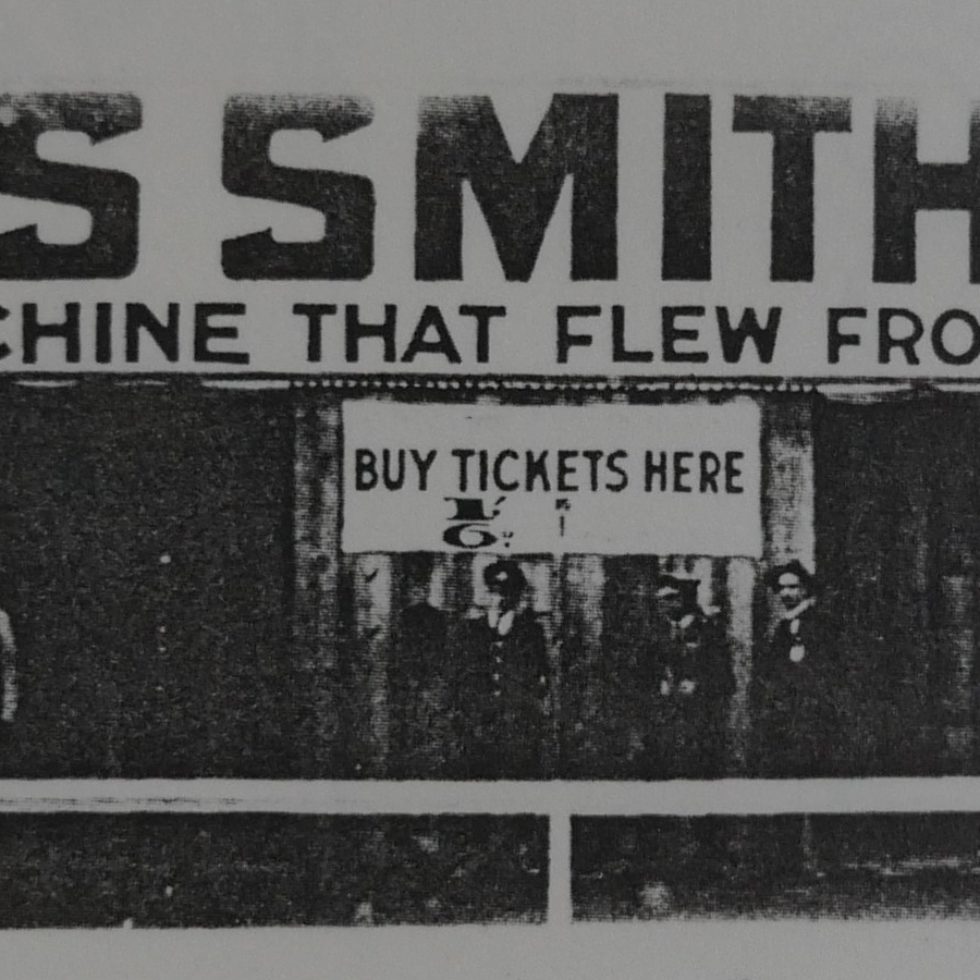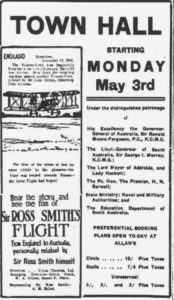
5 April, 1920
On Easter Monday 1920 the Vickers Vimy made its final flight, from Adelaide back to Point Cook in Melbourne.
Sir Ross Smith had originally planned to leave on 31 March, but that didn’t happen due to a problematic starboard engine. As Ross described in a later letter to Vickers: “After landing we found the epicyclic gear casing cracked. On dismantling the gear it was found that the planetary ball race had broken and the balls had been flying around inside the gear casing.” Ross, ever a staunch defender of Vickers and Rolls Royce, put it down to “a slight problem” that would require a day or two to put right.
As it happened, the mechanics undertook the repairs for nearly a week while progressively longer delays were announced, before everything was finally back together and working on Easter Sunday. (Incidentally, the epicyclic gear reduces the propeller to about 1,100 rpm while the engine is doing 1,700-2,000.)
The crew took off at 7.40am without risking another test flight. Andrew and Jessie Smith were there to see their boys off again, and Jim’s mother and sister Marjorie were also among an enthusiastic crowd. Jim’s father had returned to Melbourne earlier in the stay.
SA aviator Harry Butler accompanied the Vimy as far as Bridgewater, aerobatting all the way, and the Vimy flew low over the 30,000-strong crowd at the Oakbank Easter race meeting at 8.20am.
The crew reached Pt Cook at 2.15pm, with Ross taxiing straight into hangar 7 to position the Vimy over its previous grease spots without ground assistance. There was another enthusiastic but small crowd to greet them, including Jim’s father and senior base officers.
It hadn’t been a good day. Nothing was said in the press, but Ross had been forced to shut down the port engine en route. As his letter to Vickers notes: “…the oil pressure on the port engine again dropped so I closed the engine down thinking the bearing had gone again. Examination has since shown that the bearings are OK and that the trouble was caused by the oil filter becoming partly blocked with fluff which apparently had not been cleaned out of the engine before assembly the last time.”
 On 6 April, Ross and Keith caught a train to Sydney with Frank Hurley to finalise arrangements for a lecture/film tour to start in Adelaide on 3 May (as advertised left).
On 6 April, Ross and Keith caught a train to Sydney with Frank Hurley to finalise arrangements for a lecture/film tour to start in Adelaide on 3 May (as advertised left).
The Vimy went on public exhibit at Pt Cook to raise money for the planned Australian War Museum, which opened in Melbourne’s Royal Exhibition Building on Anzac Day 1922. The Vimy was also exhibited at the Sydney Royal Show earlier that April, with Wally as the exhibition guide. It was there that Wally would have learned of Ross and Jim’s deaths at Brooklands on 13 April 1922. They were in England with Keith, and had done the Buckingham Palace knighthood investiture and a UK lecture tour. The three men were supposed to leave a couple of weeks later on a round-the-world flight attempt.
The Australian War Museum was moved to Sydney in 1925 and the Vimy exhibited there until its closure in 1935. The Vimy had, incidentally, been taken on strength by the RAAF and designated A5-1 sometime after August 1921 when the RAAF register was introduced. It was struck off when it went to the museum in Melbourne.
The Vimy was again exhibited in the AWM when it opened in Canberra in 1941, and remained on show until the 1950s when it was crowded out by an influx of WWII artefacts.
Thanks to Mike Milln from the South Australian Aviation Museum for his assistance with this post.